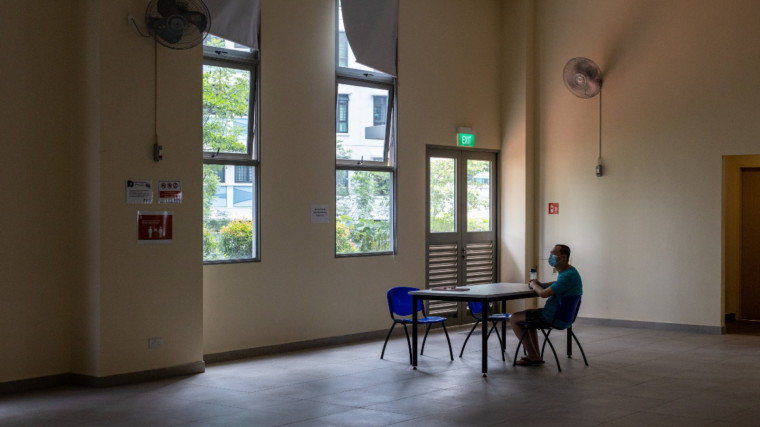Most parents in Singapore expect their children to go off to school, get a job, get married, and move out – all by a certain age. But Bob Lee hopes to take care of his 14-year-old son, Jun Le, for as long as he is able to.
Jun Le was diagnosed with Autism Spectrum Disorder when he was 3 years old.
Though it was an uphill battle, Bob and his wife Hwee Hwee have learnt to care for their son and manage his condition for the past decade. Yet it is not so much the present that the Lees are worried about, but the future.
Bob tells The Pride: “I am 45 years old now, but what happens in 20, or even 30 years?”
He knows that as he and his wife grow older, they may not have the energy and strength to continue being caregivers for their child.
Other stories you might like

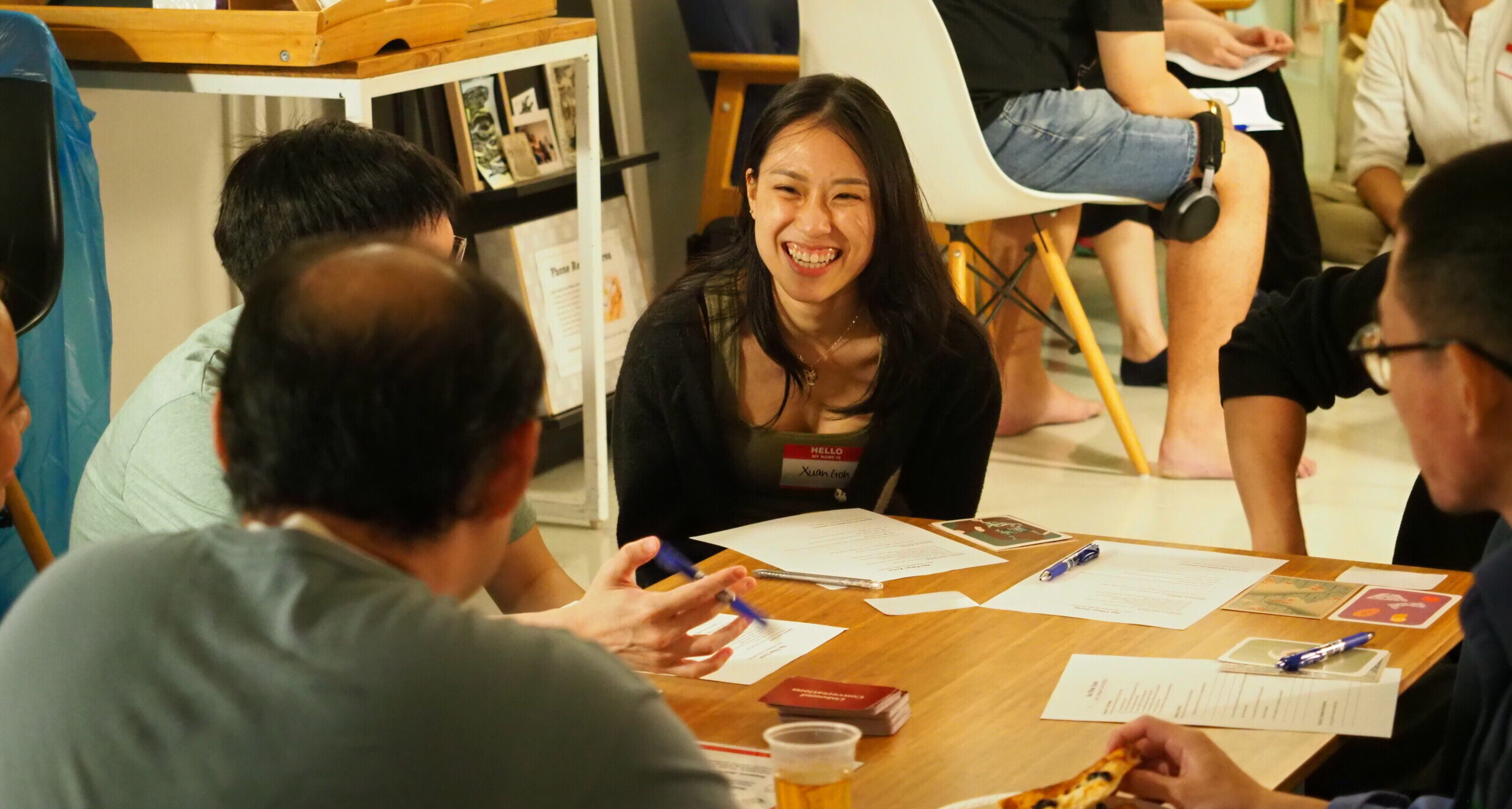
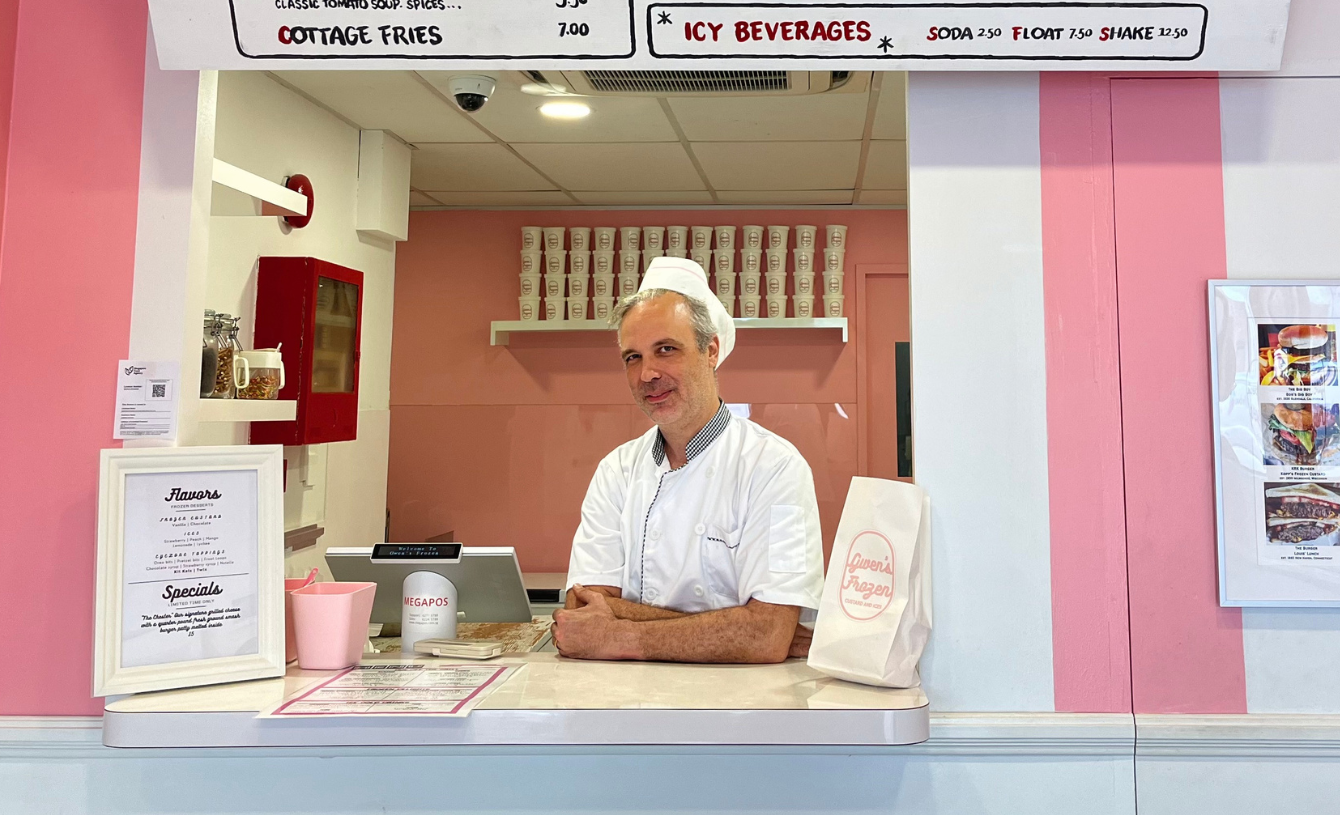

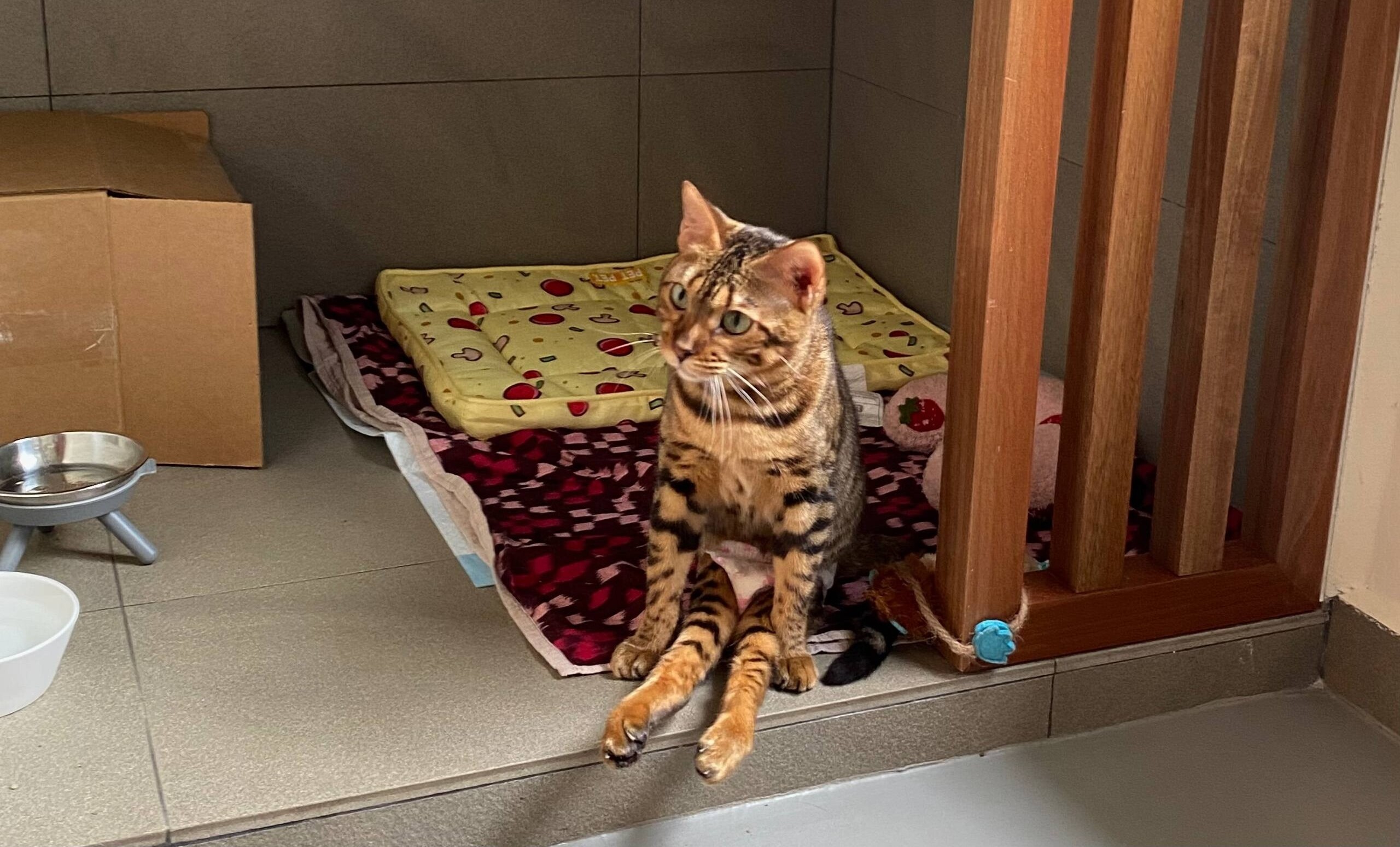

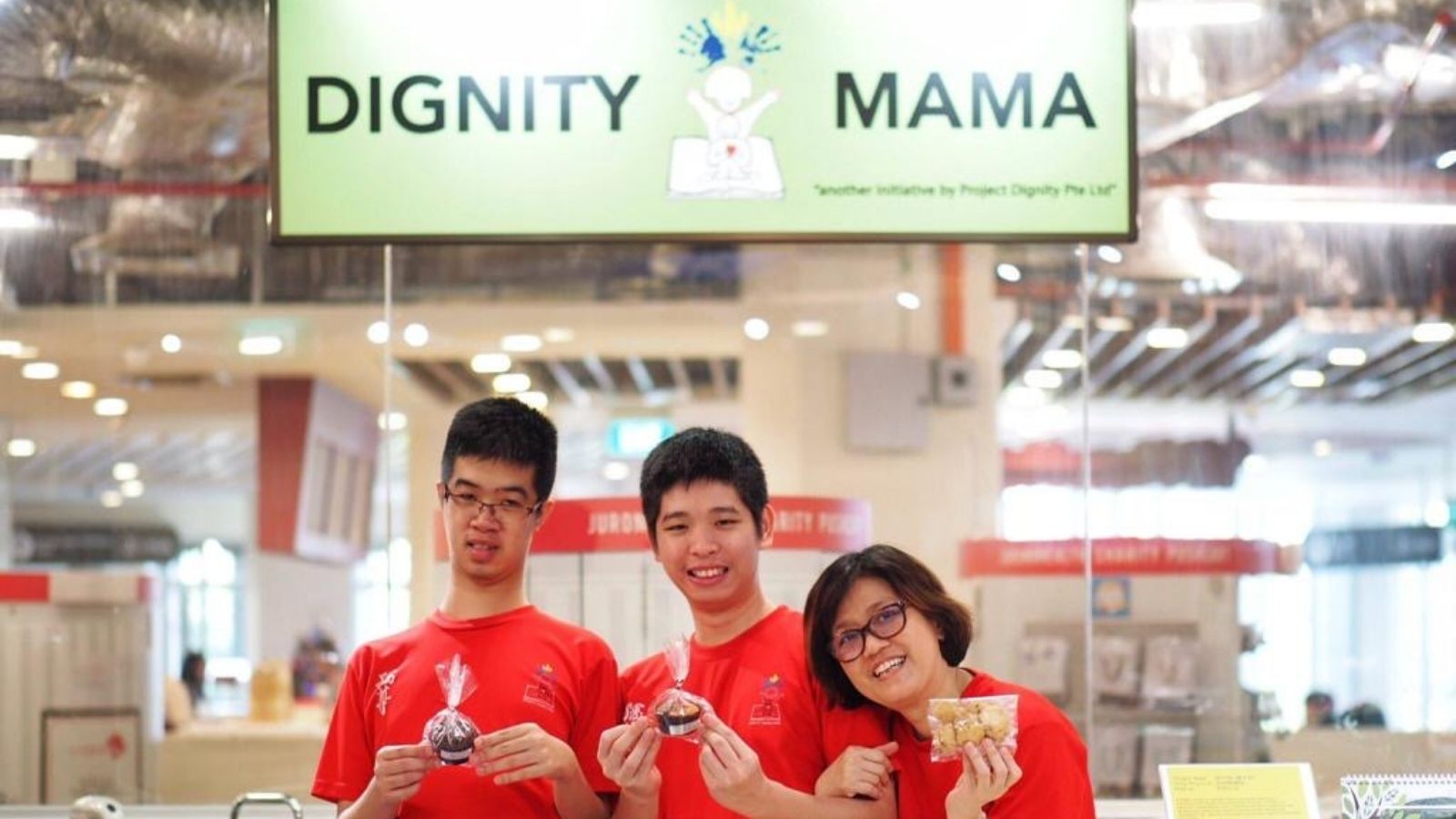
Other parents may have all kinds of ambitions and dreams for their children, but Bob’s only hope is that Jun Le would one day be able to live a relatively independent life.
He explains: “When special-needs children leave [special education] schools, everyone thinks they have no options. So parents have to let them stay at home, or put them in day activity centers. And those are so expensive. These kids cannot work, and they become socially isolated.”
“Jun Le is 14 years old now. He is graduating in four years. What happens next?”
Many of the questions that fill Bob’s mind are the same concerns of other parents of children on the spectrum: What kind of future are they looking at? What happens once they leave school? Who would employ them?
A former photojournalist with Lianhe Zaobao, Bob, who works freelance so as to better care for Jun Le, decided to use his professional skills to shine a light on these issues.
He says: “I want to find out what I can do for Jun Le. What skillsets he can develop, and what opportunities I can find for him.”
Finding their futures
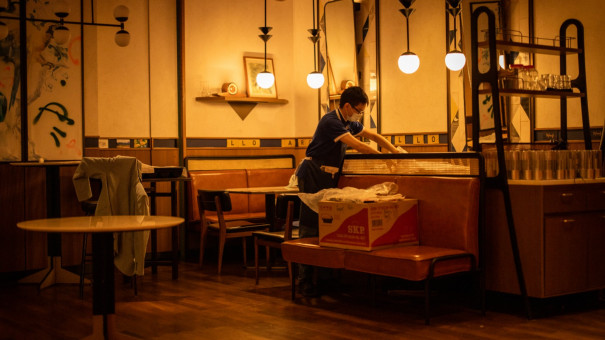
With the help of local charity SPD, and through other connections like Facebook support groups such as Friends of ASD Families, Bob met with 12 young adults on the spectrum.
After interviewing and photographing them and their families, Bob and his wife have learnt that there are so many possibilities for Jun Le in his future.
He shares their stories in a photo exhibition, “Finding What’s Next”, which opens tomorrow (Apr 16) at the Esplanade Tunnel.
The 84 photographs and videos show how these special-needs individuals search for a future with their families after leaving the cocoon of special-education schools.
These photos shed light on the daily struggles and unique social and personal challenges that autistic adults and their families face. And each of them have found different answers to the all-important question: What’s next?
These answers are presented in nine distinct themes across the exhibition – Finding: Rhythm; Meaning; Motivation; Faith; Peace; Friendship; Resilience; Home; and Purpose.
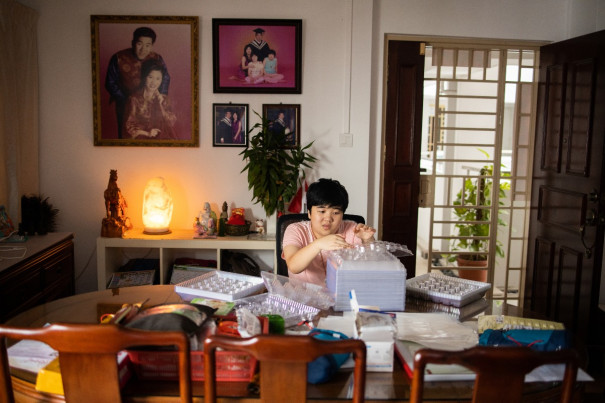
For example, in Finding Meaning, we see how a pair of autistic sisters, Gek Teng,21 and Gek Huee, 19, have found a way of passing time and earning a small allowance ($4 per thousand pieces) through little tasks like labelling plastic egg cartons, up to 2,000 in one afternoon.
They also sell intricate beadwork through local social enterprise Social Gifting.
Their mother, Chua Soh Ling, 48, keeps an eye out for such opportunities for her girls to spend their time meaningfully.
She says in Mandarin: “They are not useless, they do have some ability. As long as we can discover their strengths, we shouldn’t leave them to idle for the rest of their lives… They are able to learn, as long as you are willing to teach.”
“I will do more to teach them when I’m still around, so those who take over from me will find it less straining.”
Another story tells of Amit, once termed a “public nuisance”, who has found resilience working as an urban farmer at Edible Garden City, and now contributes to his family’s living expenses.
A third story is of Benjamin, who found motivation through working as a server in a restaurant, and takes pride in his ability to earn his own income.
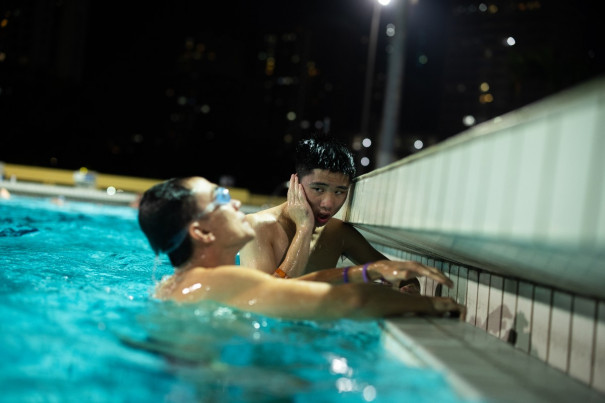
In Finding Rhythm, we meet twenty-year-old Marcus, who is constantly on the move – from bouncing on his trampoline, to swimming at the local pool or zipping around on his kick scooter.
These activities are to help Marcus cope with sensory dysregulation – where his sensory system is out of balance. His head-banging behaviour and loud grunts and squeals, which may invite uncomfortable glances from others, do not faze his father Toh Chin Kiang, one bit.
Says Chin Kiang, 54: “I think spending time with Marcus is not a to-do list. It’s how, as a father, you also enjoy him, simply because he’s my son.”
“We celebrate simple things, his milestones, being able to do certain types of exercises… like somersaults in a swimming pool, being able to go on a bicycle. These are things that you just want to celebrate with him.”
Looking beyond the present
From his own experience, Bob knows parents are often so exhausted from the day-to-day needs of their children that they lack energy to adequately plan for their future.
One of his goals for the exhibition is to remind parents to look beyond their children’s present needs, and to consider options and possibilities for their future.
He says: “Parents get fatigued in caring. They don’t plan for their children for after [they turn] 18. So this exhibition is for them so they know what to do after their kids graduate. This is to help parents see that their kids are growing up, and they need to start planning what they can do.”
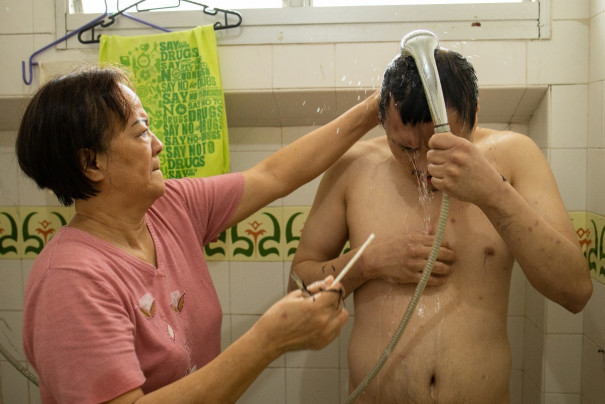
However, it takes a village to bring up a child, let alone a child on the spectrum. Parents simply cannot do it alone. They need the help of relatives. Of friends. Of neighbours.
Bob admits that sometimes he and his wife get overwhelmed: “We need help from the community. Our neighbours help. They are all familiar with Jun Le. Sometimes even the kopitiam auntie will call me if she notices something wrong with Jun Le.”
Over the years, Bob has documented Jun Le’s journey on social media.
He explains: “I found it is important to share so people can understand what is happening to my son. The more people know, the more they want to help. So creating awareness is important.”
That’s why Bob is a big believer in the community coming together to help children, who eventually grow up into adults, on the spectrum.
Nevertheless, building awareness is not enough.
Bob says: “It is only the first step. Anyone can Google and find out more about ASD. We need to actually take action. That’s why we have this exhibition. It is not only about creating awareness, but helping people ask – ‘can we do more?’”
“Maybe some people or community groups will see the photos and think ‘we can do that too’. Or a company can get an idea to do the same thing.”
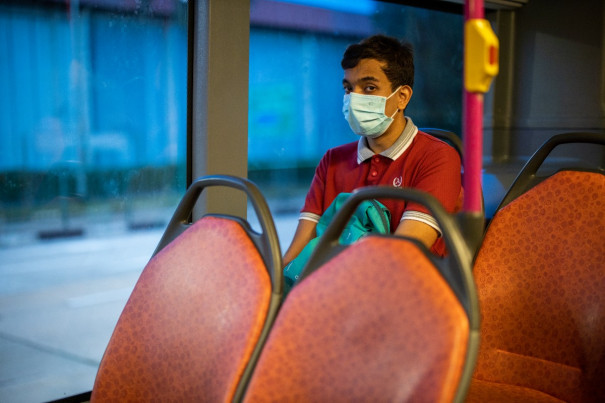
Bob’s biggest hope is that through his lens, these real lives of autistic individuals (and their families), can help inspire people to view those on the spectrum in a new light.
Adults with autism may be built differently, but they have their hopes and dreams, fears and aspirations too. They simply express it differently.
They are not individuals to be pushed to one side of society, or people who need to be taken care of for the rest of their years. They can continue learning. They can work. They can lead fulfilling lives as contributing members of society.
Bob’s photographs show that more can be done for adults with autism and how they, in turn, can contribute to the people around them.
A future in which adults on the spectrum can flourish is not a dream, but something that is already happening. What this reality needs is the power of community to grow. If it takes a village to bring up a child, then it also takes a village to help them build their future.
“Finding What’s Next” is on at the Esplanade Tunnel (walkway between Citylink Mall and the Esplanade ) from April 16 to July 4. Visit www.findingwhatsnext.sg for more details.
If you like what you read, follow us on Twitter and Google News to get the latest updates.
